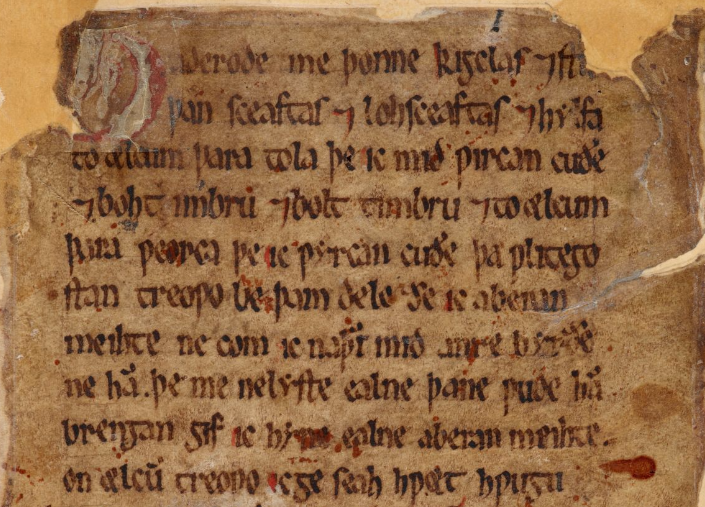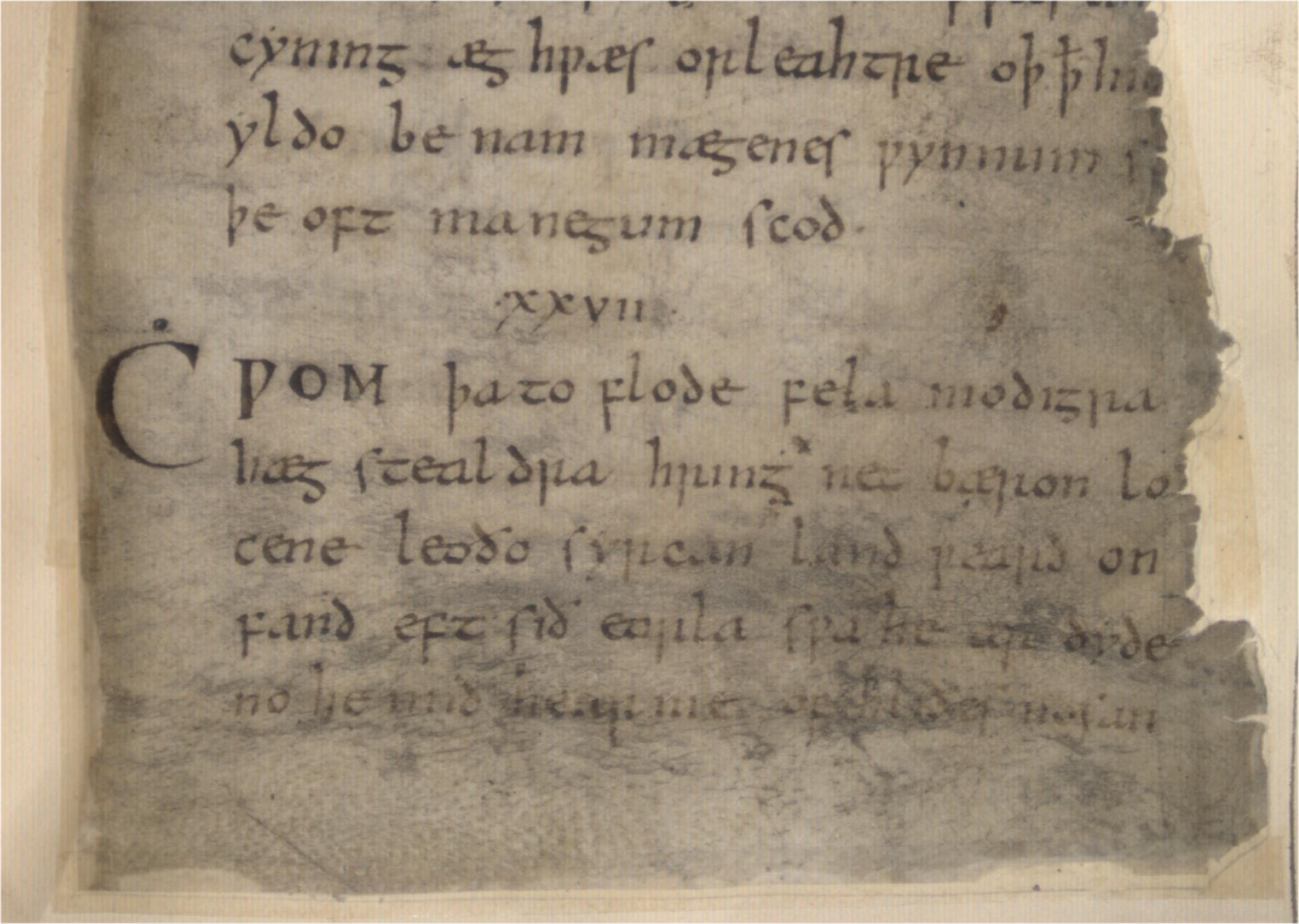

And it weathered continuous deterioration and neglect over the centuries. It survived the dissolution of English monasteries. It resisted the destruction of pagan poetry after the rise of Christianity in the Middle Ages. The survival of the Beowulf manuscript is little short of a miracle. Finally, the manuscript was digitalized as part of the Electronic Beowulf Project, which will ensure its conservation for perpetuity. Black-and-white facsimiles were produced in 18. In 1845, the British Museum mounted each leaf on a paper frame and rebound the manuscript, but it remains extremely fragile and can be handled only with the utmost care. His copies remain an important source for certain passages that have deteriorated so much that they are now illegible. Thorkelin, an Icelandic scholar, made two copies of the manuscript and published the first printed edition of Beowulf. The outer portions of its pages and some of the text itself gradually crumbled away.

In fact, it suffered greater damage by careless handling in the following years than by the Ashburnham House fire. However, the priceless treasure did not always receive the caring attention it deserved. In 1753, the Beowulf manuscript was transferred to its new home, the British Museum, where it has been kept safe ever since. Note the charred edges, scorched during the Cottonian fire 1731.


Several of the Backs of the Presses being already on Fire, they were obliged toīe broke open, and the Books, as many as could be, were thrown out of the Still, and the Engines sent for not coming so soon as could be wished, and Presses with the Books in them were also removed but the Fire increasing and the Books under the Head of Augustus in the Cottonian Library,Īs being esteemed the most valuable amongst the Collection. The Deputy-Librarian took Care in the first Place to remove the famous Alexandrian But theįire prevailing, notwithstanding the Means used to extinguish it, Mr. Pieces of Timber and Wainscot, where it first broke out, and therefore did notīegin to remove the Books so soon as they otherwise would have done. In hopes at first to have put a Stop to the Fire by throwing Water upon the Timber, that stood perpendicularly upon each end of the Mantle-Tree. Lodged, and was communicated to that Room by the Wainscot, and by Pieces of of the Royal and Cottonian Libraries were Bentley, and the rest of the FamilyĪt Ashburnham-House, which soon after broke out into a Flame: It began fromĪ wooden Mantle-Tree's taking Fire, which lay across a Stove-Chimney, that was On Saturday Morning October 23, 1731, about two o' Clock,Ī great Smoak was perceived by Dr. The Beowulf manuscript, closely bound between its leather covers, survived but was scorched along its exposed edges.Ĭlick here for an excerpt from a report on the fire from 1732įrom the "Committee Appointed to View the Cottonian Library Report", 1732: The Cottonian library was bequeathed to the British nation and eventually moved to Ashburnham House at Westminster, where, on October 23, 1731, a devastating fire broke out, damaging hundreds of invaluable manuscripts completely destroying thirteen. To this day, this is the official designation of the manuscript – Cotton Vitellius A. The Beowulf manuscript was the fifteenth volume on shelf A of the bookcase under the bust of emperor Vitellius. The manuscripts were bound in leather and placed in fourteen bookcases, each watched over by the bust of a Roman emperor or empress. Even today, the manuscript bears his signature on its first page and is bound in the so-called Nowell Codex.Īntiquarian Sir Robert Cotton (1571-1631) acquired the manuscript for his Cottonian library, the richest private collection of manuscripts ever amassed. 1571), an early Anglo-Saxon scholar, and author of the very first Old English dictionary, Vocabularium Saxonicum. The manuscript came into the possession of Laurence Nowell, Dean of Lichfield (c. It is not known whether the Beowulf manuscript was in fact held by a monastery, though it seems quite likely, and how it may have survived the dissolution. Thousands were irretrievably lost – the library of Augustine Friars Abbey at York contained 646 volumes, all but three of which were destroyed Worcester Priory had 600 books at the time of the dissolution, only six of which survived to the present day. The related destruction of the monastic libraries was an unspeakable catastrophe for the conservation of Old English manuscripts. King Henry VIII (1491-1547) dissolved a large number of monasteries in order to replenish his chronically empty treasury.


 0 kommentar(er)
0 kommentar(er)
